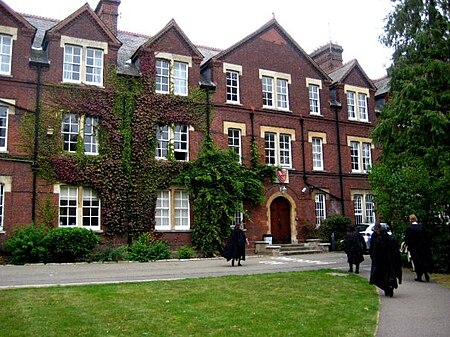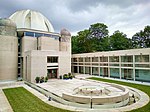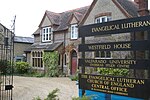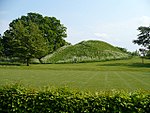Von Hügel Institute

The Von Hügel Institute (VHI) is an academic research institute based at St Edmund's College, Cambridge, a constituent part of the University of Cambridge in England. Founded in 1987, it is named after Anatole von Hügel (1854–1928), naturalist and co-founder (with the Henry Fitzalan-Howard, 15th Duke of Norfolk) of St Edmund's College. It was established, according to the College's Ordinances, to 'preserve and develop the Roman Catholic tradition of the College' by carrying out research on Catholic Social Teaching, on the relationship between Christianity and society, and on issues of social justice. The institute has been directed by Rev Chris Moss SJ, the Rev Frank McHugh, Rev Frank Carey WF, Professor David Bridges, Rev David Clark and Professor John Loughlin. Professor Mary McAleese, former President of Ireland and Honorary Fellow of St Edmund's is a Patron of the VHI, alongside Professor Rowan Williams, Rt Rev Alan Hopes, and the Countess of St Andrews (Dr Sylvana Tomaselli).
Excerpt from the Wikipedia article Von Hügel Institute (License: CC BY-SA 3.0, Authors, Images).Von Hügel Institute
A1134, Cambridge
Geographical coordinates (GPS) Address Website Nearby Places Show on map
Geographical coordinates (GPS)
| Latitude | Longitude |
|---|---|
| N 52.2129 ° | E 0.1092 ° |
Address
St Edmund's College
A1134
CB3 0BN Cambridge
England, United Kingdom
Open on Google Maps











